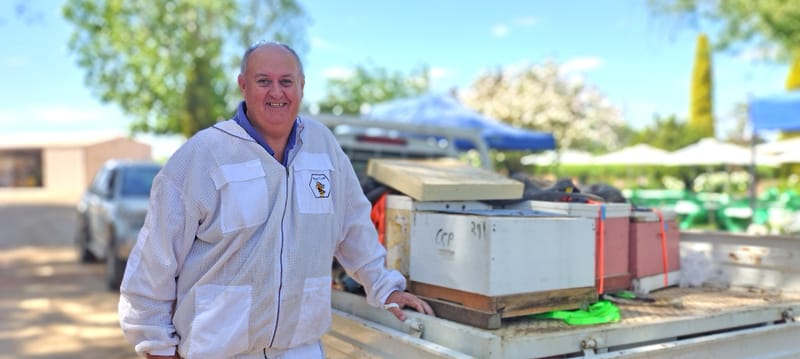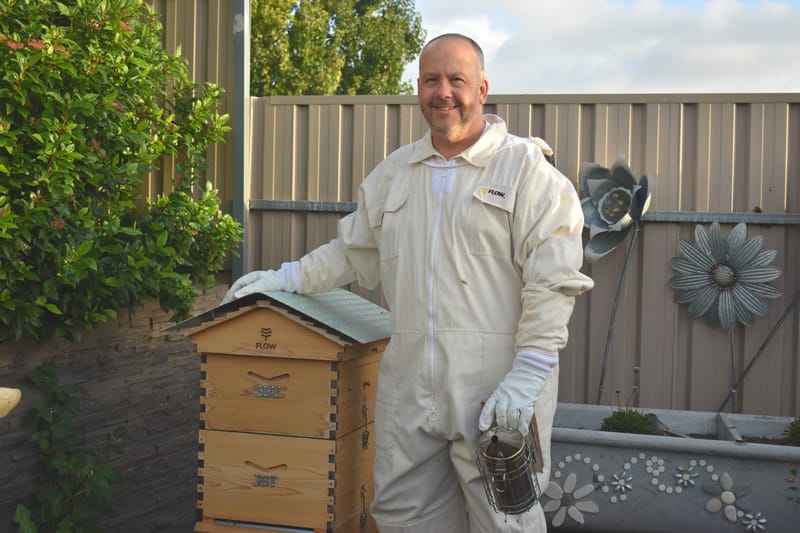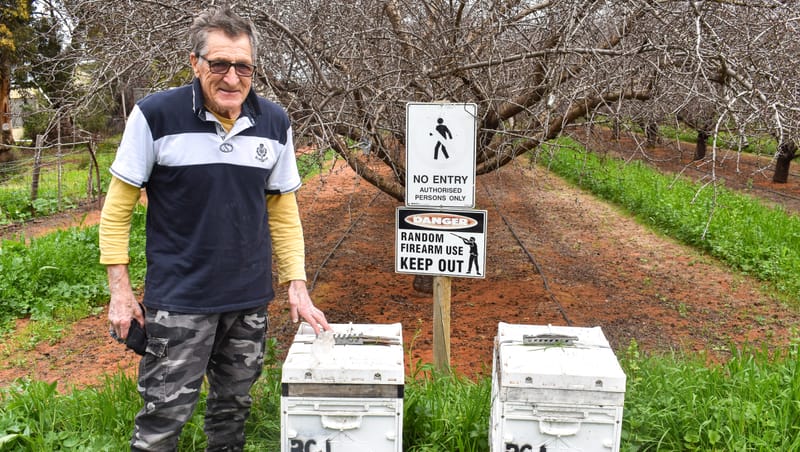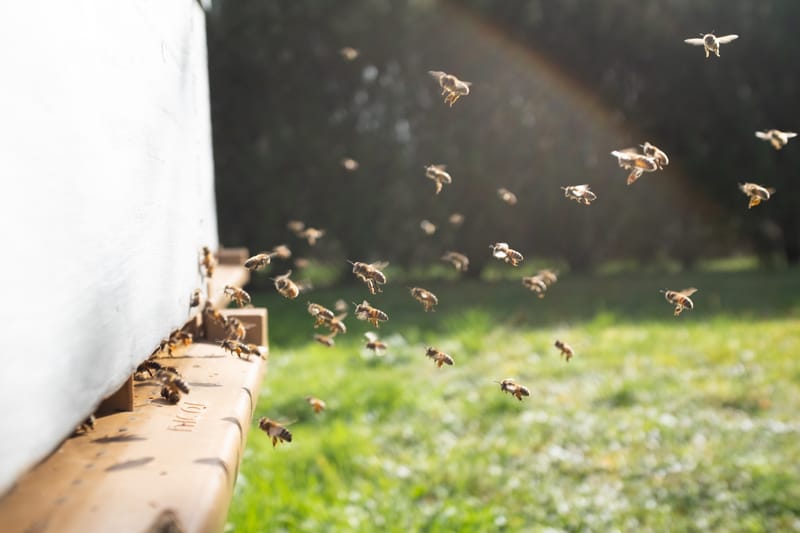When life gives you bees, make honey
IT is common knowledge that without bees we would struggle to survive as a human race, and their importance is amplified by the many produce varieties that require their pollination services across the state. Affectionately known as the Riverland...
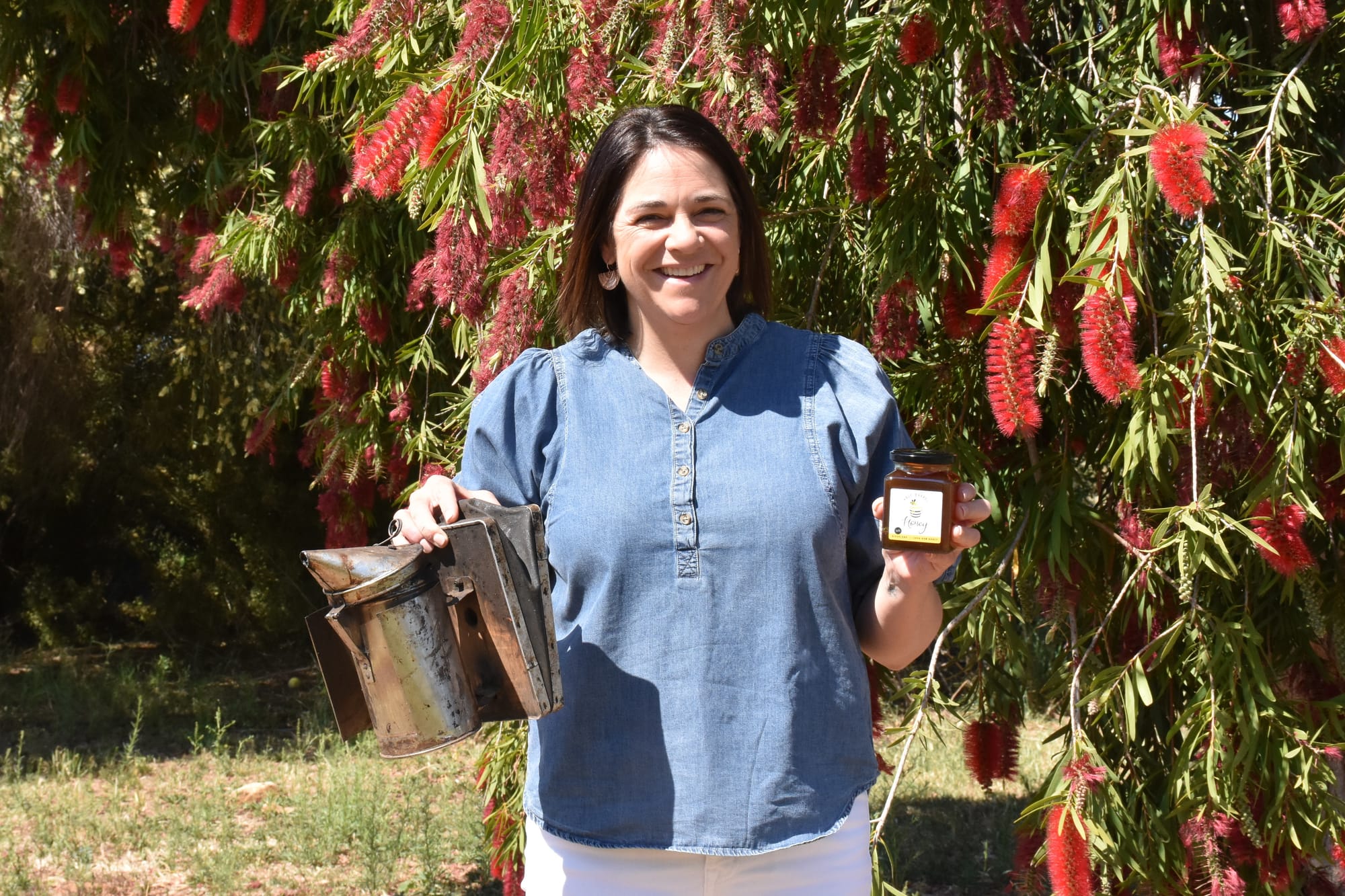
IT is common knowledge that without bees we would struggle to survive as a human race, and their importance is amplified by the many produce varieties that require their pollination services across the state.
Affectionately known as the Riverland Bee Lady, Kerry Chambers knew nothing about bees except that they made honey, but that all changed almost eight years ago when the bees “chose” her.
A mother to a nine-month-old at time, when Kerry and her family returned home from an overseas holiday to a well-established nest of bees inside her veranda’s half wine barrel, something had to be done.
“I got on to YouTube and saw all these videos of people saving bees, transferring colonies in unwanted places to established hives – and I just thought, ‘Well if they can do it, I can do it’,” she said.
“I bought a Flow Hive and got a local beekeeper to come and help me. He transferred the bees from the barrel and I stood inside behind a glass door, scared out of my mind.”
Kerry built up her confidence with handling and looking after bees while still on maternity leave and became a hobby beekeeper.
I just loved it. Any spare minute I had, I was reading about bees so I just became really obsessed with it,” she said.
When her hive swarmed – a natural way of reproducing – and split into two, which soon became four, her talents started to become known throughout the Riverland.
“I had lots of honey, so I started giving it away, and then people started to know me as the Bee Lady,” she said.
“Whenever it was swarm season it would end up being me people called to catch their backyard swarm, so my own backyard started to really fill up. I thought, ‘Right, I need to start doing markets to get rid of this honey’ and it just evolved.”
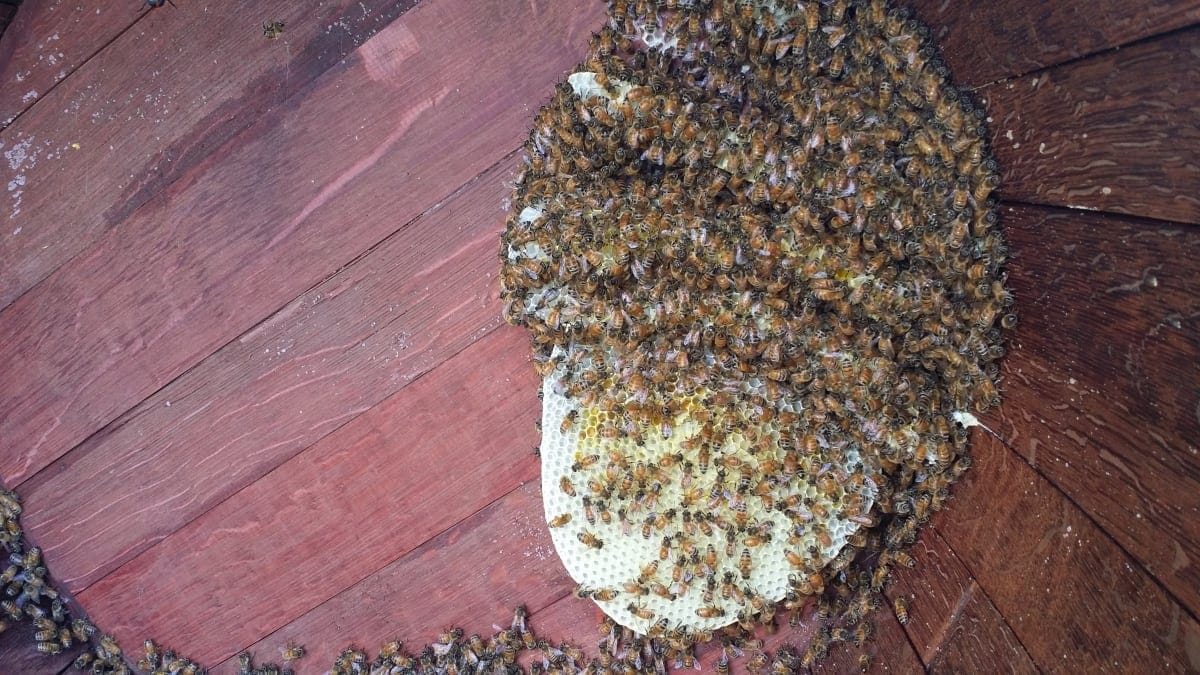
Through her business Half Barrel Honey, Kerry has grown to keep anywhere from 25 to 30 hives at a time and now offers different services throughout the region including pollination for primary producers, swarm removal and a host-a-hive program.
Bee pollination is the driving force behind one third of the food we eat as humans, and many local crops – canola, citrus, apples, avocadoes, stone fruit, cherries and almonds, to name a few – rely heavily on bee pollination services.
“Here in the Riverland we have lots of almond blocks, so I started putting them on almonds, and a few on avocadoes and blueberries,” Kerry said.
When varroa mite came knocking in 2022, the local almond industry looked to be on the brink of failure for the season with interstate restrictions keeping bees in their own zones, and growers faced a shortage of pollinators.
“They wanted to completely eradicate the pest so, similarly to fruit fly, there were areas that had hive restrictions on them and you couldn’t move the bees,” Kerry said.
A lot of hives were euthanised to try and get rid of the varroa mite, and that went over a 12 to 18-month period.
“Some farmers didn’t get any hives, which impacted their ability to make a profit on their almonds because you need bees for almonds to be produced. That caused a lot of issues, especially because the beekeeping industry works so closely with the almond industry and rely on each other to survive.”
Bees like Kerry’s are said to be most suitable for Riverland pollination due to being acclimatised to the region, with no travel stress keeping them from working on the Riverland crops immediately.
However, the national move from eradication of varroa mite to management of the pest in September 2023 is an added challenge for beekeepers like Kerry and those in the commercial space alike.
“In hindsight, we were the only continent without it and nowhere else has been able to eradicate it – so we were up against it, and should’ve learned from other countries to just go with management from the start and we wouldn’t have had to kill that many hives,” she said.
“It will be a big learning curve for us, learning what we need to look for and what we should do if the infestation goes past that point. At the moment we’re also monitoring for wax moth and a hive beetle, and then we have notifiable diseases like American and European Foul Brood that we have to check for all the time and inform PIRSA if we have it.
“It’s extra time, but it’s also extra money having to buy equipment for that monitoring process. It’s something we have to live with now – I’m just not 100 per cent sure what that will look like.”
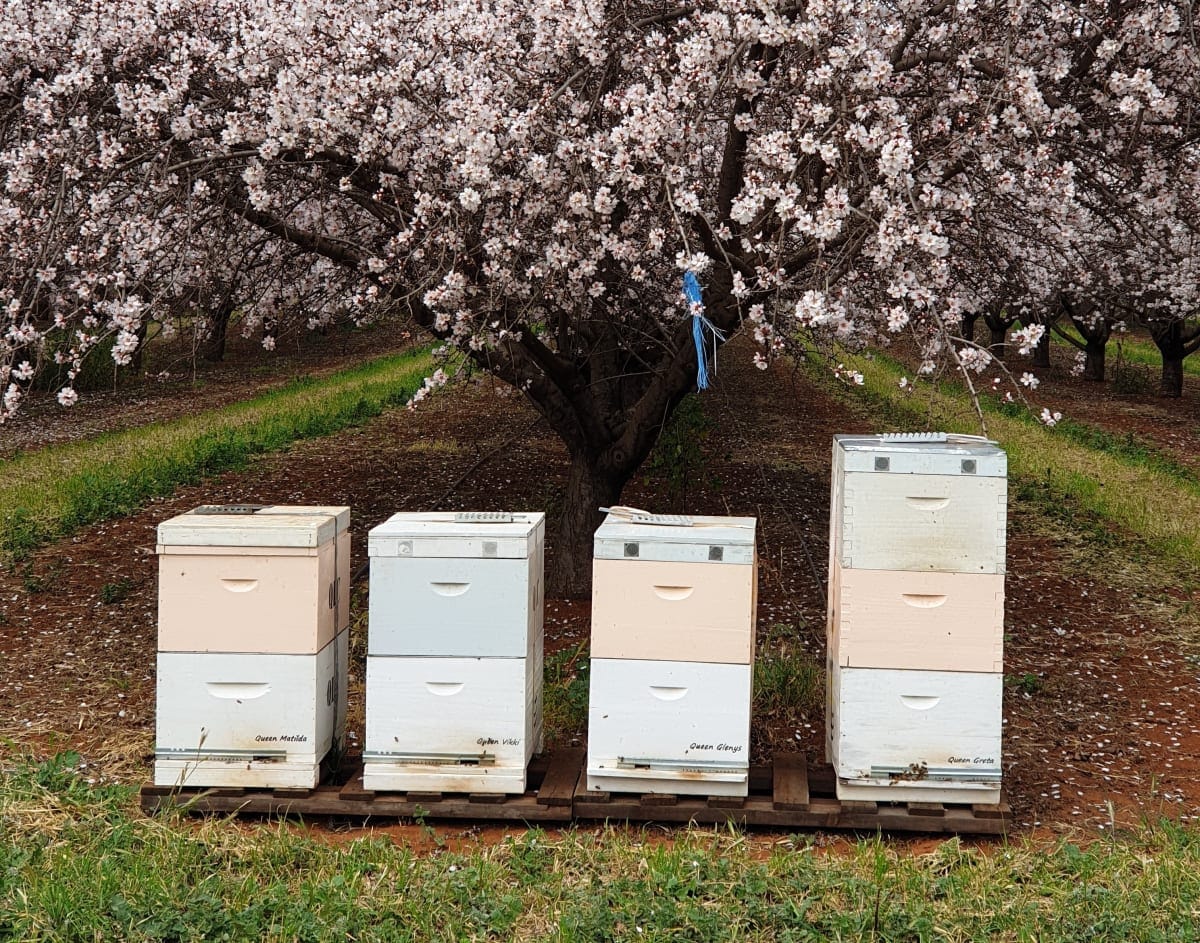
An “interesting mix” of Riverlanders have taken up Kerry’s host-a-hive program, which offers a hive of bees on lease for a month at a time to improve pollination and produce honey.
“Some of those people are pretty hands-off – they have a great garden, some fruit trees, a veggie patch – they just want the bees for pollination and don’t want anything to do with them,” Kerry said.
“Some other people have been interested in getting into beekeeping but are still a little nervous about whether they can manage it, so it’s a really good way to try their hand at it.
"The risk and pressures are off, you have a hive and a suit to come and watch what I do so it’s education as they go.”
Constantly trying to learn more as she progresses through her beekeeping career – while still a part-time teacher – Kerry said the job she never tires of is swarm removal.
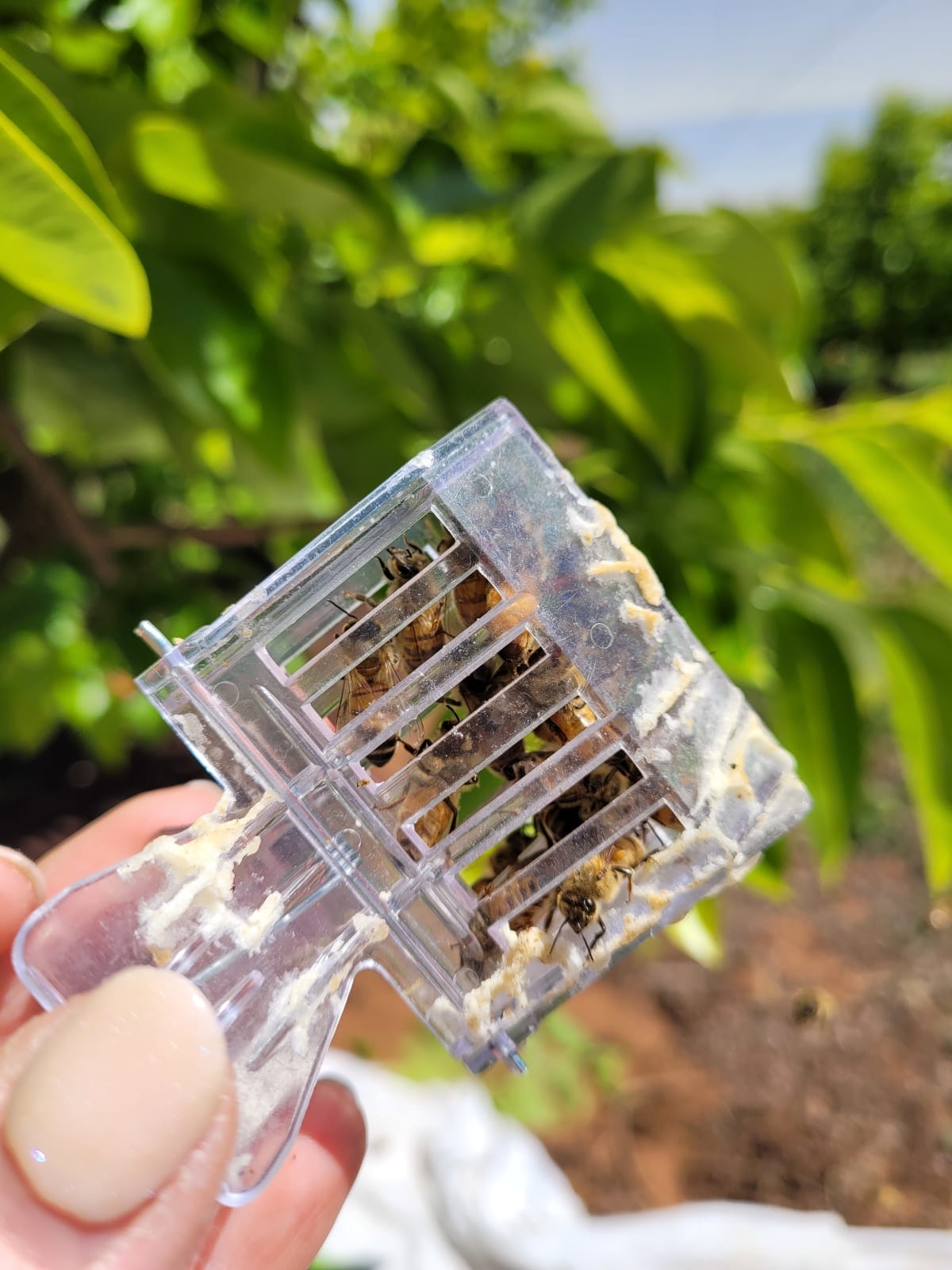
“I get a real kick out of catching swarms because to be good at it you need to have a really good understanding about bee behaviour,” she said.
“When bees are in swarming mode they’re essentially homeless, so they’re less defensive.
“Before they leave the hive they fill up their honey stomachs with nectar, so it’s kind of like us after Christmas lunch and all we want to do is sit down and relax.
“It is intimidating if you haven’t spent any time around bees and you walk past a tree with the size of about two basketballs of bees – but they’re actually really docile.
In the middle of that ball of bees is the queen, and those bees are attracted to her pheromones so they won’t leave her because if they do their chances of survival are nil.”
Most recently, Kerry learned to make her own queen bees for sale to both backyard and commercial beekeepers.
“When a colony loses their queen, they need to work quick to make a new one because even though worker bees are all female they haven’t mated with a drone,” she explained.
“If there’s no queen, there’s no one making new bees so the colony will, over time, die. They’ll make 10 to 15 queens and then the first one to hatch will go around and kill all the others because there can only ever be one.
“You trick the colony and just before the cells hatch you take them out and separate them to hatch on their own. I’ve had a few tragic times where I haven’t gone back in time and one of them has hatched, all the others have been stung and that’s hundreds of dollars down the drain because I was a day – or even an hour – late.”


